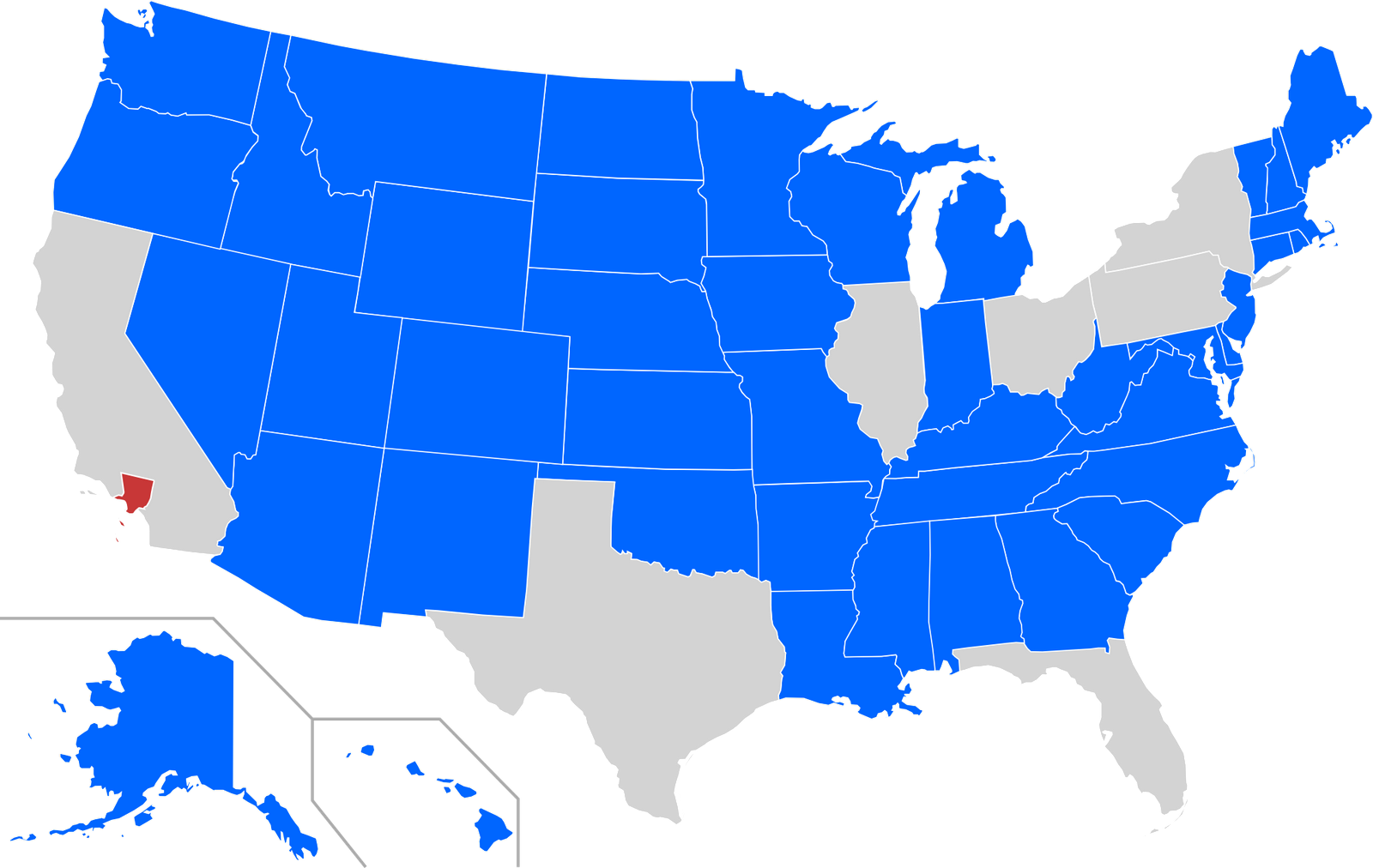
States colored blue have a smaller population than Los Angeles County
The Electoral College is a process, not a place. The founding fathers established it in the Constitution as a compromise between election of the President by a vote in Congress and election of the President by a popular vote of qualified
citizens.
The Electoral College process consists of the selection of the electors, the meeting of the electors where they vote for President and Vice President, and the counting of the electoral votes by Congress.
The Electoral College consists of 538 electors. A majority of 270 electoral votes is required to elect the President. Your state’s entitled allotment of electors equals the number of members in its Congressional delegation:
one for each member in the House of Representatives plus two for your Senators.
Under the 23rd Amendment of the Constitution, the District of Columbia is allocated 3 electors and treated like a state for purposes of the Electoral College. For this reason, in the following discussion, the word “state” also
refers to the District of Columbia.
Each candidate running for President in your state has his or her own group of electors. The electors are generally chosen by the candidate’s political party, but state laws vary on how the electors are selected and what their
responsibilities are. Read more about the qualifications of the Electors and restrictions on who the Electors may vote for.
The presidential election is held every four years on the Tuesday after the first Monday in November. You help choose your state’s electors when you vote for President because when you vote for your candidate you are actually
voting for your candidate’s electors.
Most states have a “winner-take-all” system that awards all electors to the winning presidential candidate. However, Maine and Nebraska each have a variation of “proportional representation.”
After the presidential election, your governor prepares a “Certificate of Ascertainment” listing all of the candidates who ran for President in your state along with the names of their respective electors. The Certificate of
Ascertainment also declares the winning presidential candidate in your state and shows which electors will represent your state at the meeting of the electors in December of the election year. Your state's Certificates of Ascertainments
are sent to the Congress and the National Archives as part of the official records of the presidential election. See the key dates for the 2016 election and information about the roles and responsibilities of state officials, the
Office of the Federal Register and the National Archives and Records Administration (NARA), and the Congress in the Electoral College process.
The meeting of the electors takes place on the first Monday after the second Wednesday in December after the presidential election. The electors meet in their respective states, where they cast their votes for President and
Vice President on separate ballots. Your state’s electors’ votes are recorded on a “Certificate of Vote,” which is prepared at the meeting by the electors. Your state’s Certificates of Votes are sent to the Congress and the National
Archives as part of the official records of the presidential election. See the key dates for the 2016 election and information about the roles and responsibilities of state officials and the Congress in the Electoral College process.
Each state’s electoral votes are counted in a joint session of Congress on the 6th of January in the year following the meeting of the electors. Members of the House and Senate meet in the House chamber to conduct the official
tally of electoral votes. See the key dates for the 2016 election and information about the role and responsibilities of Congress in the Electoral College process.
The Vice President, as President of the Senate, presides over the count and announces the results of the vote. The President of the Senate then declares which persons, if any, have been elected President and Vice President
of the United States.
The President-Elect takes the oath of office and is sworn in as President of the United States on January 20th in the year following the Presidential election.
Sources:
https://www.archives.gov/federal-register/electoral-college/about.html
https://geoshen.com/posts/comparison-between-los-angeles-metropolitan-area-and-us-states-by-gdp
https://twitter.com/amazing_maps/status/938566248203464704?lang=en
https://en.wikipedia.org/wiki/List_of_states_and_territories_of_the_United_States_by_population